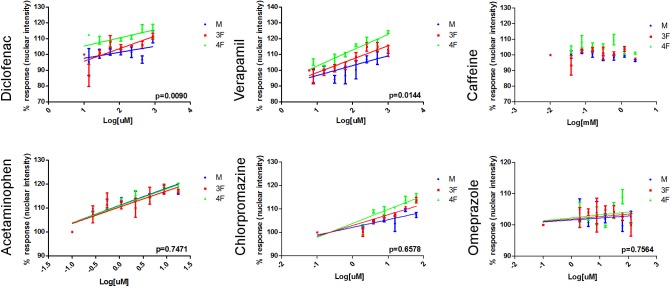Fig 4. Nuclear intensity dose response curves after 4h treatment with Diclofenac, Verapamil, Caffeine, Acetaminophen, Chlorpromazine, and Omeprazole.
5000 human primary hepatocytes pooled from either 12 male donors (M), or 12 pre-menopausal female donors (3F) or 12 post-menopausal female donors (4F) were seeded in 96 well plates and exposed to 8 serial concentrations (using a dilution factor of 1:2) of Diclofenac (from 13.6 to 1750 uM), Acetaminophen (from 0.3 to 35 uM), Verapamil (from 7.8 to 1000 uM), Chlorpromazine (from 1.9 to 250 uM), Caffeine (from 39 to 5000 uM), or Omeprazole (from 1.9 to 250 uM) for 30 min, 1h, 2h, 3h, 4h, and 5h. Hepatocytes nuclei were stained with Hoechst 33342 and increase in nuclear intensity was measured at different time points using the Cellomics ArrayScan VTI platform and the Target Activation Bioapplication v.4. GraphPad Prism-derived dose response curves obtained treating primary hepatocytes for 4h with Diclofenac, Verapamil, Acetaminophen, Chlorpromazine, and Omeprazole are reported. Statistically significant sex differences (P value<0.05) comparing the EC50 values from the three groups of hepatocytes (M vs 3F vs 4F) were observed only with primary hepatocytes treated for 4h with Diclofenac (P value = 0.0090) or with Verapamil (P value = 0.0144). Diclofenac and Verapamil resulted more toxic in 4F hepatocytes. No statistically significant nuclear intensity modifications were obtained comparing M, 3F, and 4F hepatocytes treated with Acetaminophen (P value = 0.7471), Chlorpromazine (P value = 0.6578), and Omeprazole (P value = 0.7574). Caffeine did not give any increase in nuclear intensity. Assays were run in triplicates. Results are expressed as mean ±SEM.

